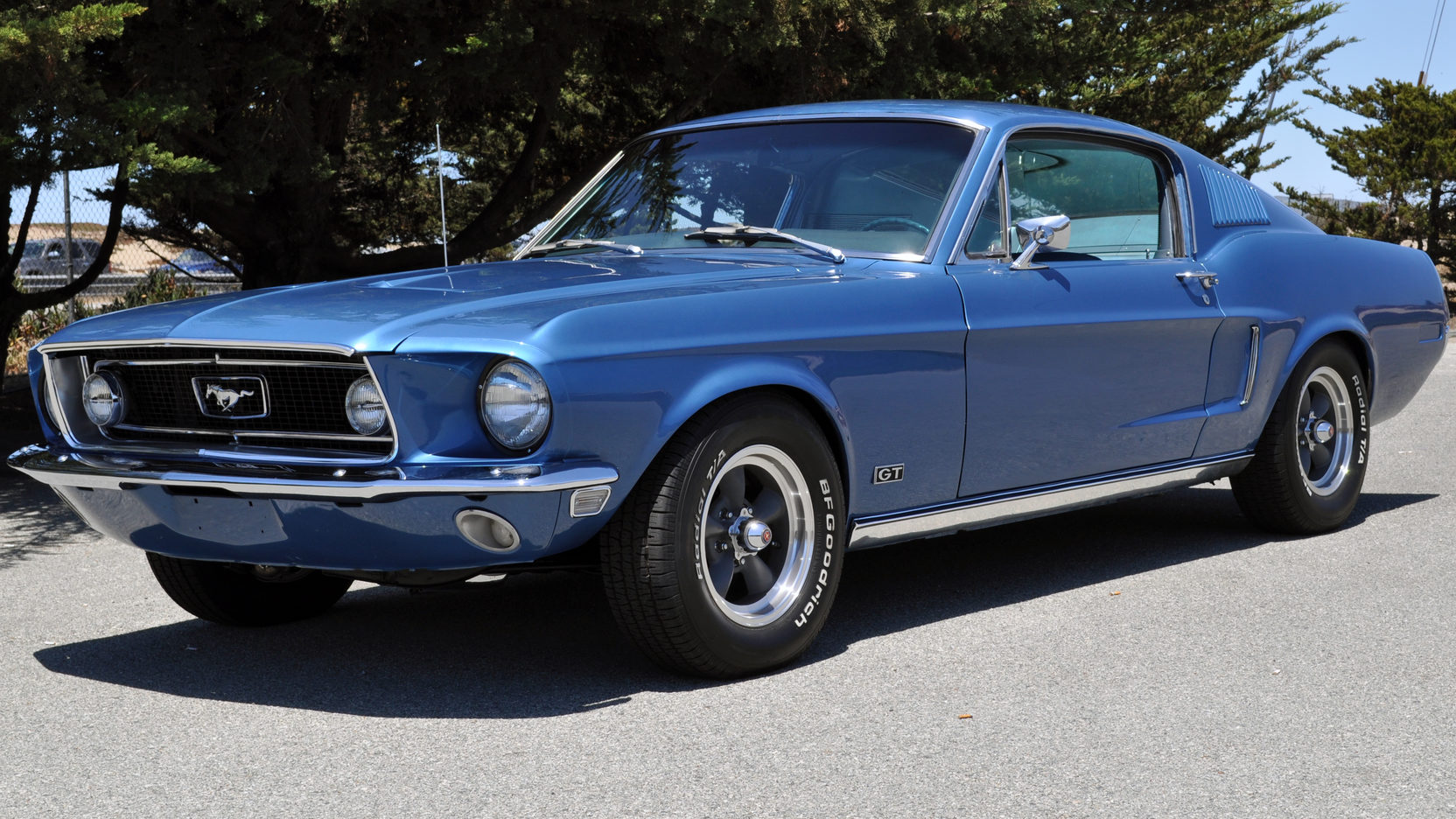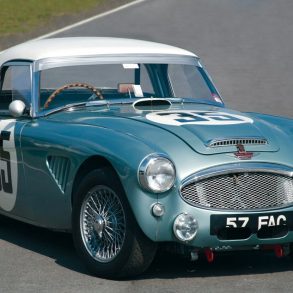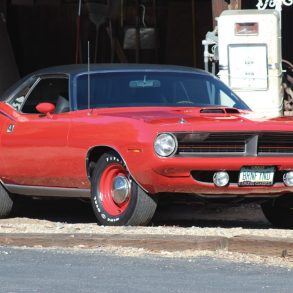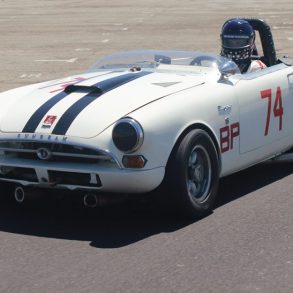The 1968 Ford Mustang offered incredible engine options and safety features that made it a stand-out Pony car from the rest of the crowd in the 1960s.
Half a century ago, the first generation vehicles were a real magnet for customers in the American car market. The Mustang brought a much-needed freshness to the American car markets. It was also accessible to a wider crowd of people due to a more favorable economic condition at the time of production. Although it has the reputation of being a typical American muscle car, the range of versions was diverse enough for the different tastes, needs, and wallet thicknesses.
The 1968 Mustangs’ Charm
Regardless of the model year, the base and purpose of the vehicle remained the same throughout time. Like the first, the 1968 Mustang mastered the demanding play between sportiness and usability.
With the 1968 model year’s introduction of the mighty 428 V8 engines, one might think that the car had shifted more towards power rather than usability.
The eight-cylinder engine roared with a powerful penetrating sound. These sounds spoke volumes at higher RPMs that the driver repeatedly asked himself about his actions’ legality. Not because of the dizzying increase in speed achieved, but because of the noise generated.

The 1968 Ford Mustang GT was notoriously known as a fast car. Faster than its predecessors, and despite its power, it remains surprisingly well manageable. This is mostly thanks to the improved suspension, which came with every GT model car. Putting the foot to the floor, and what usually follows is a predictable slip of the front wheels, and if the driver wishes, the Mustang will slip at the back.
Driving a powerful 1968 Mustang with zero electronic stability systems as we are used to today is not an easy task and requires an experienced driver. That right there is the charm of the vehicle- it is wild, it is unpredictable, but most of all, it will raise your heartbeat and remind you why you love cars so much.
1968 Ford Mustang – New Development and Changes
In 1967 the first-generation vehicle received the first major redesign, which continued in the 1968 model year. The 1968 Ford Mustang is well known as the initial variant to display side markers. The additional side markers were added in 1968 as new USA Federal regulations demanded all new vehicles have front and back side markers.
This is also the most straightforward way to differentiate a pre-1968 car from the 1968 Mustang. The second federally mandated safety feature was the shoulder belts. Both of these safety features made the 1968 vehicle the safest Mustang ever.

Another point of difference was that the 1968 vehicle also featured a newly designed two-spoke energy-absorbing steering wheel.

There were also several other modifications with the 1968 model year. The 1968 Mustang was the first car with no ‘FORD’ lettering on the vehicle’s hood. Also, the side scoops were switched out in 1968 and replaced with one-piece chrome details (they were also pointed out by the new C-stripe graphics).
The other major design change was the grille. Gone were the two horizontal lines surrounding the steed emblem. They added a single band around the emblem and a horizontal line connecting the band to the sides of the grille.
Another small but significant change was applying the rearview mirror to the windshield and not the frame of the vehicle.
Taking a look at the 1968 Ford Mustang brochure, you can see several new features that journalists initially had not picked up. There was an update to the odometer, which let you reset it with a single push of a button to measure your trip’s distance accurately. This was only available with V8-powered cars.
The 1968 vehicle also featured a rear window defogger, an important new feature that improved visibility through the back window. A high-speed fan directed the flow of air to the rear window, which kept it fog-free.
The third remarkable feature was a group of “convenience” signal lights on the dashboard. These signal lights flashed to advise you to buckle your seat belts, release the parking brake, and warn you of low fuel levels and unclosed doors. These features, although common today, were a standout feature of the day.

Performance and Engine Selection
In 1968, Ford offered the vehicle with a choice of seven engines, one 6-cylinder engine, and six V8 engines. Horsepower ranged from 120 in the 6-cylinder engine and all the way up to 335 horsepower and more in the 428 cubic-inch V8 engine.
A newcomer in the engine lineup was the 302 engine which served as a replacement for the old 289 engines. The 302 offered 30 more horsepower than the 289 engine, 230 hp in total.
The 428 Cobra Jet Mustang featured the 428 V8 engine with 335 hp. Based on the 428 police car short block engine, the 428 featured an aluminum manifold, 427 low-riser cylinder heads, and a special camshaft.
The changes did not stop there for the Cobra Jet Mustang. Several suspension tweaks made the 428 Ford Mustangs highly popular on the drag strip.
The multiple engine options made the Mustang more accessible to a larger customer base. Not only in terms of financial commitments but also based on power needs. Those in need of a more sporty car could opt-in for one of the stronger V8s. Alternatively, if all you only needed were a relaxed coupe, convertible, or a fastback, the 120 horsepower 6-cylinder engine would still provide an enjoyable ride for a smaller purchase.
Special Editions
1968 was an interesting year for the vehicle. Most Mustang enthusiasts remember the infamous GT 390 Fastback, which was made popular by the movie Bullit, featuring Steve McQueen. McQueen drove the 1968 Ford Mustang Fastback and chased a Dodge Charger down the streets of San Francisco. The movie showcased the capabilities of the car and helped develop the iconic status of the Mustang.
Recently the GT Mustang from the movie sold for $3.7 million at the beginning of 2020 on the auction block with Mecum Auction in Kissimmee, Florida.
Mustang in ‘Bullitt’ movie – Source: Youtube
Ford dealers around the Denver area also offered their own special edition 1968 Mustang named the “High Country Special”.
These cars had a similar design to the California special package complete with special striping and Shelby styling.

1968 is also made special in the history of the vehicle due to the return of the Sprint Mustang. Shelby GT350 and GT500 Mustangs returned to the company with a new “King of the Road” Shelby.
King of the Road or the GT500KR was released in 1968 and featured a Shelby tuned 428 Cobra Jet engine that produced more than 400 horsepower.
All the Shelby models were given a separate front end with a larger radiator grille, additional headlights, and scoops on the hood’s front edge. The diversity now included fastback and convertible models in GT350 versions with 340 hp, the GT500 with the 7-liter V8 Cobra Jet engine, or the GT500KR with the same engine but with other modifications to the suspension.

All 1968 Mustang GT featured the new GT logos and emblems along with fog lamps, dual exhaust system, GT stripe, heavy-duty suspension, wide-oval tires, and special GT styled rims. They also offered power front disc brakes which came at an extra cost and were only offered with the 390 and 428 engines.
Racing legacy
The 1968 Ford Mustang was a force to be reckoned with in the world of racing. Stripped down, the V8 powered Mustangs were present in all major racing events such as the 24 hours of Daytona, the 1968 season of Trans American Championship, SCCA regional championships and also major European racing events such as the 6 Hours of Nurburgring, Tour de France and several others.
The Mustang was basically everywhere and regularly featured on the podium. The 1968 car was versatile, powerful, and consistently reliable from endurance races to the drag strip.
Overall, the first-generation vehicle instantly succeeded in all areas of competitive driving. Some well-known Ford Mustang race car drivers include Jerry Titus, Bob Johnson, and Mark Donohue.
The GT350 Mustangs won the SCCA B-Production championships three years in a row from 1965 to 1967. They were also successful in winning the Trans-American Championship in both 1966 and 1967. 1968 was not the most successful year for the Ford racing teams, but they still managed many top 3 positions.
Even today, first-generation Mustang remains a common choice for vintage racing events.
Bullitt launches the Mustang
The movie Bullitt was absolutely groundbreaking back in 1968, as it not only glorified the vehicle but also set benchmarks on how to effectively shoot car campaigns in an urban environment.
This introduced a whole new film genre to the world. It should also be noted that Steve McQueen participated in the film as the main actor, but as an avid motorist and a fan of racing motorcycles and cars, he drove most of the rides in the film himself. He often mentioned in later interviews he loved the car and had it in his personal collection.
Steve McQueen in “Bullitt” – Source: Youtube
Viewers’ response to the film and the 1968 Mustang “Bullitt” was also important for Ford. They quickly realized how powerful the film industry could be to promote cars. Shortly after Bullitt’s success, Ford set up a special department to work with film production companies to promote particular cars.
The 1968 model year of the Mustang will go down in history as a year that surged the car’ss popularity in pop culture and ultimately into a classic car. Even though sales were already heavily declining, more than 300,000 vehicles were still sold in 1968. Regardless of the dropping sales, the 1968 car raised the Mustang status in ways no other single car had done prior. Ford today still produces the Mustang brand riding on that legacy of the first generation vehicles.











The iconic status of the Ford Mustang can be attributed to several major factors, including its lasting hallmarks of great looks and performance combined with affordability – as well as it’s starring roles on the big screen. But, for enthusiasts who have nurtured this image, the legend of Mustang began on the racetrack and grew quickly over four decades of dominating performances.
The new 440-horsepower Mustang GT-R concept is a bold expression of this glorious racing success, with ties to some of Ford’s most famous racing moments, and fittingly arrives as tens of thousands of Mustang fans prepare to gather (at a racetrack of course) to honor the legend’s 40th anniversary.
https://ppmauto.com/en/mustang-racing-history/